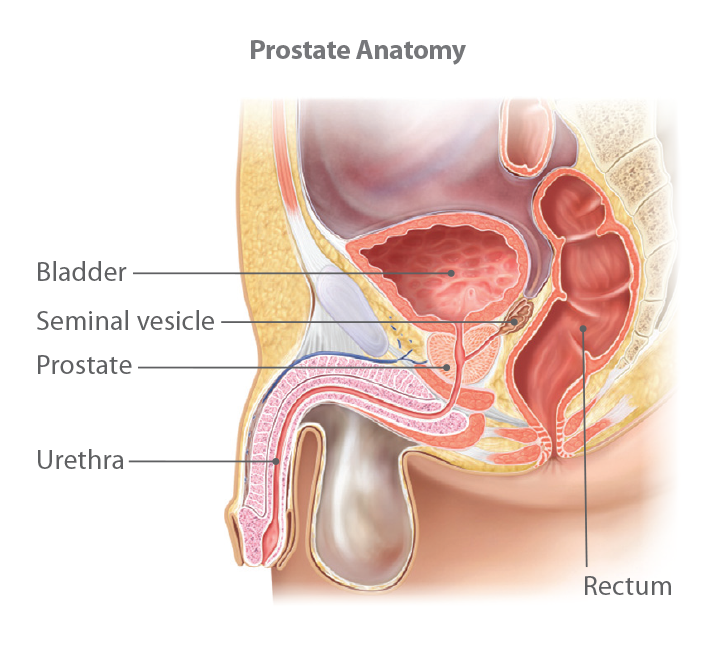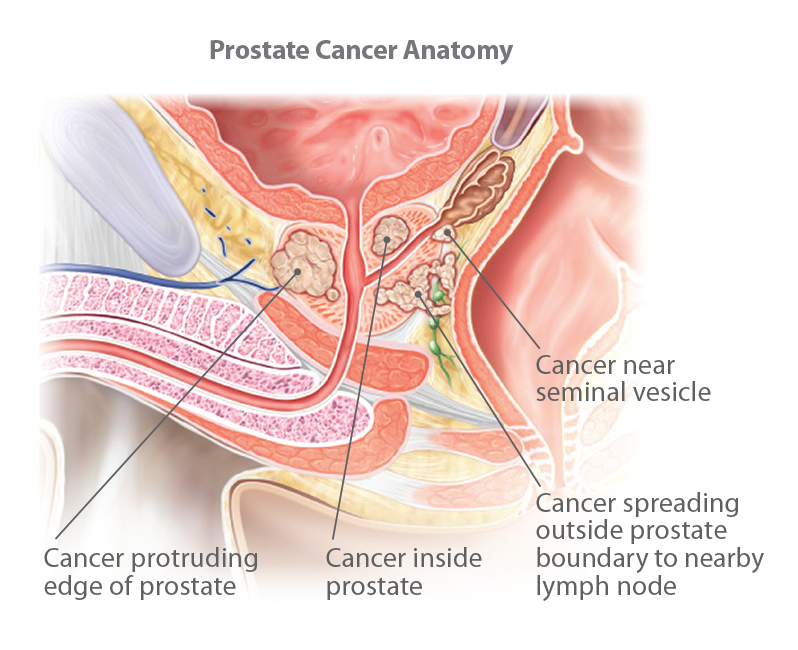Understanding prostate cancer
Prostate cancer is cancer that begins in tissues of the prostate gland. Located just below the bladder and in front of the rectum, the prostate is the male sex gland responsible for the production of semen.
More than 99 percent of prostate cancers develop in the gland cells. This type of prostate cancer is called adenocarcinoma. In rare cases, prostate cancer originates in other tissues of the prostate, which is called a sarcoma.
If you undergo a prostate cancer biopsy at City of Hope, your doctor examines the tissues to learn more about the cancer cells. Your doctor then assigns the cancer a Gleason sum (Grade 6-10) and/or a grade group based upon its microscopic appearance.
Staging prostate cancer
There are two types of staging for prostate cancer:
Clinical: This is based on the results of a PSA test, digital rectal exam (DRE), Gleason score and imaging tests. A doctor uses the results of these tests and exams to determine the stage of the cancer and decide whether further diagnostic exams, such as an MRI, are needed.
Pathological: This type of staging is based on information uncovered after prostate surgery. The prostate tissue is examined to get a more detailed and sometimes more accurate stage of the disease.
Staging tools
TNM system
The American Joint Committee on Cancer (AJCC) has developed a uniform system for describing the stages of prostate and several other cancers. This system allows doctors to describe how advanced a cancer is and to share that information with one another in a meaningful way. The three key components of the TNM system are:
- T (tumor) describes the tumor’s size, location and how deep it has grown into the tissue.
- N (node) indicates whether cancer cells have spread to nearby lymph nodes, or the channels connecting the lymph nodes.
- M (metastasis) refers to whether the cancer cells have spread to distant organs or tissue.
Each category of the TMN system has subcategories that describe in more detail the extent of the disease. For instance, T0 means no evidence of a tumor, while T2 describes the tumor confined to the prostate.
Gleason score
The Gleason score measures the extent of cell mutations in a cancer. The higher the score, the more aggressive the cancer may be. In some cases, Gleason scores from two areas of the prostate may be combined to determine a grade group, which helps measure a patient’s prognosis. For instance, those in Gleason grade group 1 are cancers with a score of six or less, while group 5 cancers have scores of nine or 10. The higher the grade group, the worse the cancer prognosis. The Gleason score is used to help determine the grade and grade group of a tumor, which is intended to indicate its aggressiveness.
PSA test
Prostate-specific antigen (PSA) is a protein produced by the prostate that helps turn semen into a liquid. A PSA test measures the level of the protein in the blood. An elevated level of PSA may be a sign of prostate cancer, but it may also be a sign of other noncancerous conditions affecting the prostate, such as prostatitis, which is inflammation of the prostate. To confirm the reasons for the elevated PSA tests, a doctor may recommend other tests, such as a DRE or a biopsy, to look for other signs of cancer.
DRE
In examining the prostate, a doctor inserts a lubricated finger into the rectum to feel the adjacent prostate, looking for bumps or other abnormalities and to measure its size.
Prostate cancer staging
Prostate cancer has four stages, with each stage divided into sub-stages, depending on the results of the screening and diagnostic tests, as well as other factors. For instance, stage 2 prostate cancer is subdivided into stages 2A, 2B or 2C depending on a variety of factors.
If you have been diagnosed with prostate cancer, your doctor will explain the specific stage of your disease. For more detailed information on all prostate cancer stages and sub stages, please review the American Cancer Society's comprehensive chart.

